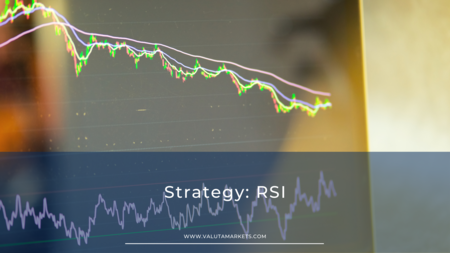The Relative Strength Index (RSI) is a popular trading tool used for forex and day trading. RSI is in the oscillator family and can help traders identify oversold and overbought conditions in non-trending markets.
The RSI technical indicator is a leading indicator meaning the signals come before a price event in the charts. The benefit of using the RSI indicator is that it gives you early signs of trade. This can be a drawback. Experienced traders combine RSI with other tools.
J.Welles Wilder developed the tool to assess the current market’s strength. The technical indicator tool is scaled from zero to 100. Readings lower than 30 are signals of oversold market conditions.
Some traders may take oversold signals as a cue to buy.
Readings above 70 signal overbought market conditions and the likelihood of a price drop. Traders take this as a cue to sell.
In addition, traders use RSI to identify centerline crossovers to identify overbought and oversold market conditions. The centerline is marked 50, and movement from below to across the centerline signals a rising trend; movement from a point above a centerline is a falling trend.
Essentially, the zero to 100 scale has three main zones: the overbought area (70-100), the neutral area (30-70), and the oversold area zero to 30.
The Relative Strength Index line migrates across the different zones creating various signals on the price chart.
RSI Setting and The Trading Signals
The frequency of signals given by RSI depends hugely on the settings. For instance, if your setting is RSI 10, the indicators will be presented using the last 10 bars on the price chart. You can use long or shorter periods.
When a trader uses a shorter period, the indicator will often attain extreme values frequently; the reverse is true. So which is the ideal setting for day traders?
The developer of the RSI indicator recommends RSI 14 as it balances the frequency and the quality of trading signals through the selected duration. However, this does not mean other signals cannot work. Investors can use them, and their choice depends mainly on the kind of trading, whether it is forex, cryptocurrencies, or stocks.
RSI’s developer has tested other signals and established that the 14 period has been effective for his trading style; if you are looking for something that has already been tested, this would be good for you.
How To Use the RSI To Trade
It is recommended that traders use the 30 level for oversold market conditions and 70 for overbought market conditions.
This means you should look out for when the RSI line moves below 30 to buy a security that has been oversold. On the other hand, they should be alert on the line moving above 70 to sell overbought securities. There are, however, more approaches traders can use.
For instance, some traders wait for the RSI line to go high up in the level to buy securities. It is safe to say the trader does not use the indicator to identify an entry or exit. Instead, they use it to determine the direction of the trend and take advantage of the movement.
Some traders have adjusted the overbought and oversold levels to 80 and 20, respectively. What do they get from the adjustment? They believe the RSI line is less likely to reach the 80 and 20 extremes as they would with conventional overbought and oversold levels.
One common RSI rule is that traders hold their trade until the RSI indicator gives them an opposite signal, whether a bullish or bearish signal.
Stop-Loss Orders
Because RSI is a leading indicator, the tool comes with the risk of false signals. Therefore, it is recommended that traders use it in combination with other tools and, if possible, employ strategies that can protect them from losses.
Using a stop-loss order will go a long way in limiting your losses regardless of your position. You can buy or sell the specific securities through a stop-loss order when they reach a pre-set price. The ideal place to set the stop-loss order is usually a level above a recent highest price swing or a recent low.
Conclusion
Using RSI as a trading indicator comes with several benefits, and the most conspicuous of them is that it features a straightforward formula. It is easy to understand, and beginners can easily find their way around it.
It also gives traders the necessary signals for making moves, keeping investors on top of market movements and opportunities to trade.
The main drawbacks are reversal timelines can be unpredictable, affecting its reliability, and the tool can also be unreliable where forex trends are too strong. The indicator is therefore popular among different traders. Users need to backtest to ensure that their strategy will work to get the most from it.

